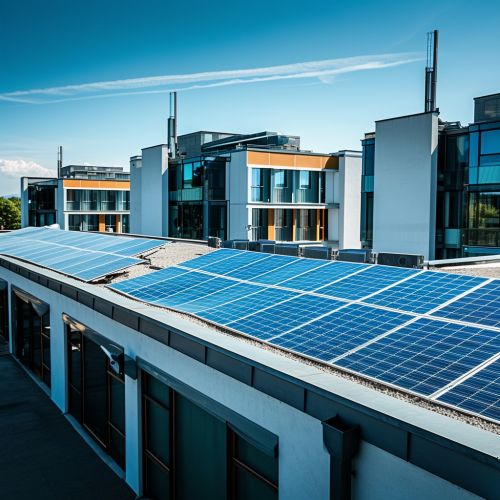Latent heat storage
Introduction
Latent heat storage is a type of thermal energy storage system that utilizes the principle of latent heat, or the energy absorbed or released during a phase change of a substance. This energy storage method is particularly advantageous due to its ability to store a large amount of energy in a relatively small volume, and its ability to release this energy at a constant temperature.
Principle of Latent Heat Storage
The fundamental principle behind latent heat storage is the phase change of a material. A phase change material (PCM) absorbs heat when it changes from a solid to a liquid, or from a liquid to a gas, and releases heat when it changes back. This is known as the material's latent heat. The phase change occurs at a constant temperature, making it an effective method for storing and releasing thermal energy.
Types of Phase Change Materials
Phase change materials are classified into three main types: organic, inorganic, and eutectic. Organic PCMs include paraffins and fatty acids, which are advantageous for their high latent heat, non-corrosiveness, and chemical stability. Inorganic PCMs, such as salt hydrates, have a high heat storage density and a melting point that can be adjusted by changing the composition. Eutectic PCMs are mixtures of two or more materials that have a lower melting point than any of their individual components.
Applications of Latent Heat Storage
Latent heat storage systems have a wide range of applications, including heating and cooling in buildings, waste heat recovery, and thermal energy storage in concentrated solar power plants. In building applications, PCMs can be incorporated into building materials to store excess heat during the day and release it at night, reducing the need for mechanical heating and cooling. In waste heat recovery, latent heat storage can capture and store waste heat from industrial processes for later use. In concentrated solar power plants, PCMs can store excess thermal energy produced during the day for electricity generation at night.


Challenges and Future Directions
Despite the many advantages of latent heat storage, there are also several challenges to its widespread implementation. These include the selection of suitable phase change materials, the design of efficient heat transfer systems, and the integration of latent heat storage into existing energy systems. Future research and development in this field will likely focus on addressing these challenges and further improving the performance and cost-effectiveness of latent heat storage systems.
